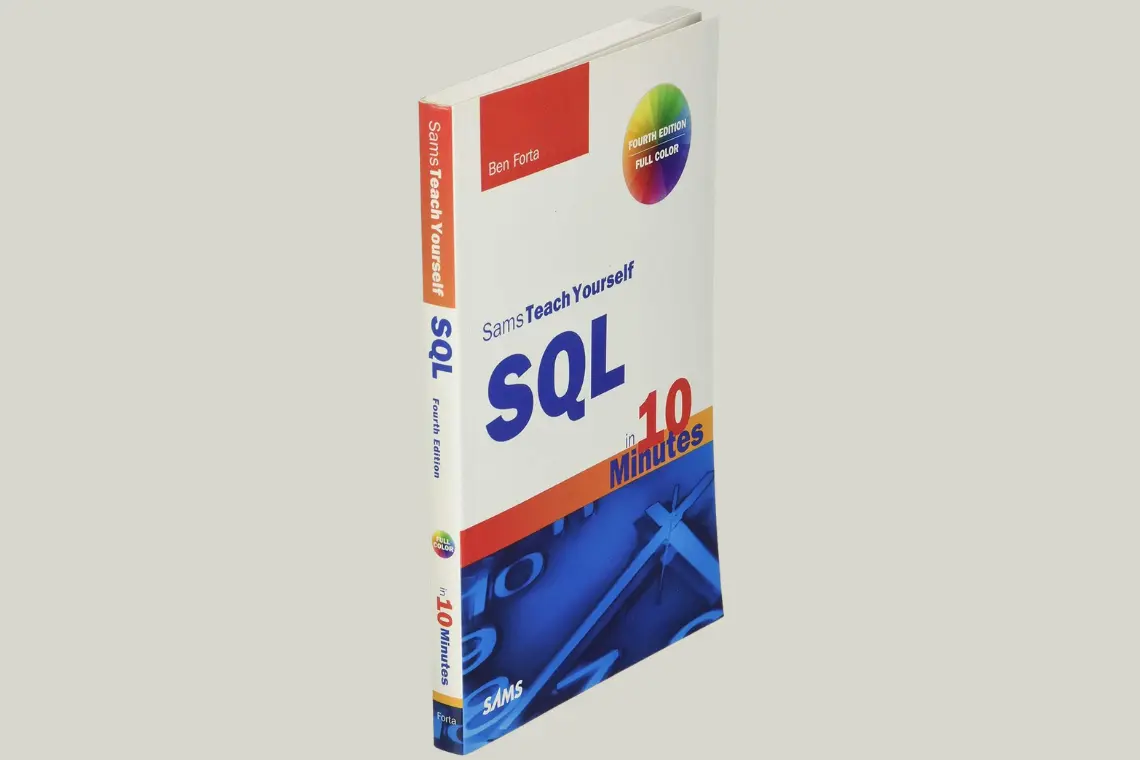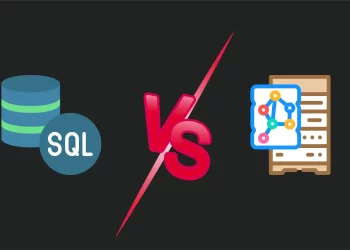The World Wide Web has transformed into a massive source of information and innovation. Today, it hosts billions of web pages, each uniquely blending text, images, and multimedia content. This staggering web growth has given birth to a critical and challenging field: web data management.
This field is not just about storing or retrieving information; it’s about making sense of an ever-changing, boundless ocean of data.
From analyzing user behavior to optimize search engines, web data management is the core of our digital experiences.
Table of Contents
Understanding the Web and Its Data
The unique nature of web data is at the heart of web data management. Web data is mostly semi-structured, which differs from data in traditional databases, which have a strict structure and format.
To put it another way, it’s not totally unstructured like plain text, nor is it strictly structured like in a relational database. An HTML document that has structured tags but not a uniform schema is a common example.
The semi-structured nature of web data gives it a flexibility, but it also makes organizing, indexing, and retrieving it very difficult. It needs complex algorithms and systems and programs that can deal with the ambiguity and regularity in web data.
The Web as a Graph
Visualizing the web as a graph offers profound insights into its structure and dynamics. In this graph, each web page is a node interconnected with others through hyperlinks, forming the edges.
This expansive network is in a constant state of change, with new pages appearing and old ones disappearing. Also, the web graph is sparse, so even though there are a lot of nodes (web pages), they only linked each node to a few other nodes.
It’s an entity that organizes itself and changes naturally, with no central direction. The web is interesting because it works like a small-world network, with only a few links between any two nodes (pages).
This interconnectedness allows for the rapid transmission of information while also posing new obstacles in accessing and maintaining this complex network.
Web Data Management Modeling Techniques
Web data doesn’t have a set schema, which makes it hard to model. This is where XML comes in handy. XML, or eXtensible Markup Language, is a versatile and self-descriptive language that has emerged as a key component in web data management.
XML, or eXtensible Markup Language, has become an important part of managing computer data because it can be used and can describe itself. It allows for showing data in a variety of ways, which works with the changing and unique nature of web material.
XML tags describe the data and how it is organized, giving us a way to read and understand it. This flexibility is especially helpful for showing the wide range of web data types, from simple text and images to complicated tree-based structures.
XML does more than just describe data; it’s the foundation of many web standards and technologies and is a key part of web services, data exchange, and content syndication.

The Mechanics of Search Engines and Web Crawling
Search engines facilitate rapid access to relevant information on the extensive web. Web searching is the art and science behind each search engine. Web crawlers, also known as spiders or bots, are tireless workers who traverse the web, following links from one page to another.
Their primary task is to browse the web to collect data for indexing systematically. The strategy of a crawler is key; it must decide which pages to visit, how often to visit them, and in what order. This is a non-trivial task, given the sheer size of the web and the rate at which it changes.
Crawlers come in various forms, such as incremental crawlers updating their indexes with newly changed web pages, focused crawlers targeting specific topics, and parallel crawlers distributing the workload across multiple machines for efficiency.
Indexing Web Content
Once crawlers collect data, it needs to be organized—an endeavor known as indexing. Indexing is the backbone of a search engine, enabling quick and efficient retrieval of information.
The most common method used for web indexing is the inverted index, a structure that maps keywords to their locations in documents.
This method, while effective, is not without challenges. The dynamic nature of the web means that indexes need to be regularly updated to reflect new, updated, or removed content.
The sheer volume of web data makes indexing a task of massive scale, requiring robust and scalable systems.
Advanced Web Querying
Web querying is a field that goes beyond simple keyword searches and includes more complicated ways to get information.
This includes systems designed to understand and respond to queries posed in natural language. In the beginning, web query systems tried to go beyond the limits of keyword searches by letting people ask questions and get direct answers.
The shift from simple search queries to advanced question-answering systems is a major advancement in the field. It involves complex algorithms for understanding language, extracting information, and determining relevance.
Querying Semi-structured Data and the Hidden Web
A challenging aspect of web data management is querying semi-structured data and accessing the hidden web.
The hidden web, also known as the deep web, refers to the part of the web not indexed by standard search engines. This includes data behind paywalls, form submissions, or databases that standard crawlers cannot access.
Retrieving this data requires specialized techniques and tools. Similarly, querying semi-structured data poses challenges because of the lack of a rigid schema.
This requires more flexible and sophisticated querying mechanisms capable of handling the variability and complexity of such data.
The Role of XML Technologies in Web Data Management
XML, or eXtensible Markup Language, is a fundamental technology in web data management. It’s a flexible, text-based format that allows for the creation of custom tags to store and transport data.
XML’s self-descriptive nature makes it incredibly versatile for representing complex data structures, particularly in the semi-structured environment of the web.
It is a cornerstone for various web applications because it can efficiently structure, store, and transmit data across different systems.
XML in Data Modeling
In web data modeling, XML shines because of its ability to handle diverse data formats and structures. XML documents contain tags that describe the data, allowing for a hierarchical and flexible structure.
This flexibility is crucial for modeling web data, which rarely conforms to a uniform structure. It enables structured and adaptable data representation for easier data processing and exchange.
XML and Web Standards
XML is not just a data representation format; it forms the basis of many web standards and protocols. For instance, RSS and Atom use XML to syndicate and distribute web content, allowing users to stay updated with their favorite websites.
Similarly, SOAP, a protocol used for web services, relies on XML for its messaging framework. These XML applications play a pivotal role in standardizing how we exchange and consume data on the web.
Database Systems and XML
Integrating XML with database systems has significantly improved web data management. Relational databases have developed to handle XML data, allowing for storage and querying of both XML and other data types.
The hybrid approach efficiently manages both structured and semi-structured data. Native XML databases store and manage XML data, specifically designed for its hierarchical structures.
These databases become crucial when scenarios require the full leverage of the flexibility and complexity of XML data.
Common Uses of Web Data Management
XML’s versatility is clear in its wide range of applications in web data management. Content management systems often use XML to store and manage web content, providing a flexible way to handle diverse content types.
XML is commonly used for exchanging data between different systems because it is platform-independent. Web services, which allow for inter-application communication, also heavily rely on XML for data messaging.
Challenges and Opportunities of Web Data Management
While XML offers many advantages, it is not without challenges. Its verbose nature can lead to larger file sizes, impacting performance and transmission speed.
Parsing XML can also be resource intensive, requiring robust processing capabilities. Despite challenges, XML is indispensable for managing web data because it offers data richness, flexibility, and interoperability.
Distributed XML Processing
Understanding XML in a Distributed Environment
In web data management, XML is a format for data representation and a key player in distributed data processing. XML technologies like XPath, XQuery, and XSLT are crucial for efficiently managing XML data across systems and platforms.
XPath: This language navigates elements and attributes in an XML document. It allows for selecting nodes by defining a path expression, making it an indispensable tool for working with XML data.
XQuery: XQuery takes XML processing a step further. It’s a powerful query language designed for querying and manipulating XML data. With working with XML documents and gathering data from multiple XML sources, XQuery is the language to use.
XSLT: XSLT (eXtensible Stylesheet Language Transformations) transforms XML documents into formats like HTML, text, or even another XML. It’s useful in scenarios where the same data needs to be presented in different styles or formats.
Internet Application Architecture
The Backbone of Modern Web Applications
To understand how web data management is applied, it is crucial to comprehend the architecture of internet applications. Modern web applications typically consist of different tiers, such as the client, middle-tier app, data integration, and remote messaging.
Client Tier
This is where user interaction takes place, usually through web browsers or mobile applications. The client tier focuses on presenting data to users and handling user inputs.
Middle-Tier Application
Often referred to as the logic tier, this layer handles the application’s processing. It’s responsible for executing business logic, making database queries, and processing data.
Data Integration Tier
This tier is crucial for managing the data itself. It involves storing, retrieving, and updating data in database systems. This often involves dealing with large, semi-structured data sets in web data management.
Remote Messaging
This component is about communication between different parts of the application, often distributed across various systems and networks. It ensures seamless data flow and integration across different application components.
XML-DBS Architectures
Integrating XML with Database Systems
Integrating XML into database systems, known as XML-DBS (XML-Database Systems) architectures, marks a significant evolution in web data management. These architectures store, query, and manipulate XML data efficiently.
XML-Enabled Databases: Traditional relational databases have adapted to handle XML data. They offer options to store XML documents in tables or using XML data types, enabling querying and indexing of XML data with relational data.
Native XML Databases: Developers specifically build these databases to store XML data. They optimize native XML databases, unlike XML-enabled relational databases, for the hierarchical nature of XML, ensuring more efficient storage, querying, and processing of XML documents.
Use Cases and Applications: Various applications use XML-DBS architectures where the flexibility and hierarchical structure of XML are essential. This involves managing content, exchanging data, and handling complex data modeling situations where relational databases may not be enough.
Web Services and Core Specifications
The Role of XML in Web Services
Web services use XML technologies to facilitate communication and data exchange between different systems over the web.
SOAP (Simple Object Access Protocol): A protocol for exchanging structured information in web services, using XML for its message format. It allows different systems to communicate with each other, regardless of the underlying platform.
WSDL (Web Services Description Language): An XML-based language used to describe the functionality offered by a web service. WSDL defines how to access a web service and what operations it will perform.
UDDI (Universal Description, Discovery, and Integration): A platform-independent framework for describing services, discovering businesses, and integrating business services using the web.
Emerging Specifications: Standards like WS-Security and WS-Reliable exchange are part of the developing landscape of web services, providing additional layers of security and reliability to web service transactions.
XML Data Models, API, and Schema Languages
Understanding XML data involves knowing its data models, APIs, and schema languages.
XML Data Models: Data models describe the structure of XML documents, such as the Document Object Model (DOM) and the XML Information Set. These models provide a standardized way to represent and interact with XML data.
APIs for XML: Developers use tools like the DOM API and the Simple API for XML (SAX) to interact programmatically with XML documents. DOM provides a tree-based structure of the XML document, allowing for read and write operations, while SAX is an event-driven, stream-based API for reading XML.
Schema Languages: XML Schema is a powerful language for defining the structure and constraining the content of XML documents. It allows for precise specification of element types, attributes, and relationships, ensuring the integrity and consistency of XML data.
Final Thoughts on Web Data Management
As we’ve explored throughout this blog, web data management is a complex yet essential field in our increasingly digital world.
The unique challenges posed by the vast, semi-structured nature of web data need innovative solutions and strategies.
XML is a key part of managing web data because it gives us the flexibility and structure to handle and understand different data formats.
The dynamics of web data management continually grow, driven by new technologies, increasing data volumes, and ever-changing user needs.
As digital professionals, it is not only helpful, but essential, that we remain informed and flexible regarding these changes.
In conclusion, effectively managing web data involves more than just dealing with the technical aspects.
As we move forward, the skills and knowledge in web data management will continue to be invaluable assets in the digital age.
🚀 Before You Go:
- 👏 Found this guide helpful? Give it a like!
- 💬 Got thoughts? Share your insights!
- 📤 Know someone who needs this? Share the post!
- 🌟 Your support keeps us going!
💻 Level up with the latest tech trends, tutorials, and tips - Straight to your inbox – no fluff, just value!















